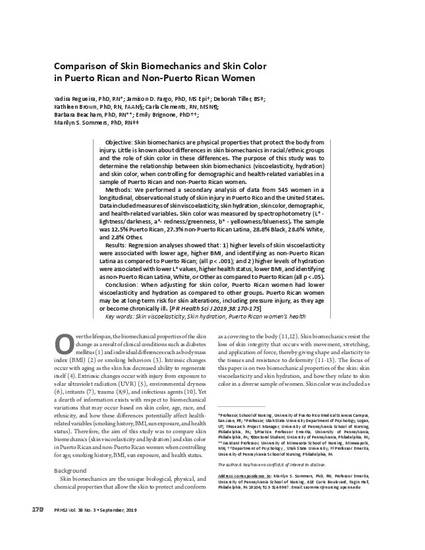
Objective: Skin biomechanics are physical properties that protect the body from injury. Little is known about differences in skin biomechanics in racial/ethnic groups and the role of skin color in these differences. The purpose of this study was to determine the relationship between skin biomechanics (viscoelasticity, hydration) and skin color, when controlling for demographic and health-related variables in a sample of Puerto Rican and non-Puerto Rican women.
Methods: We performed a secondary analysis of data from 545 women in a longitudinal, observational study of skin injury in Puerto Rico and the United States. Data included measures of skin viscoelasticity, skin hydration, skin color, demographic, and health-related variables. Skin color was measured by spectrophotometry (L* - lightness/darkness, a*- redness/greenness, b* - yellowness/blueness). The sample was 12.5% Puerto Rican, 27.3% non-Puerto Rican Latina, 28.8% Black, 28.6% White, and 2.8% Other.
Results: Regression analyses showed that: 1) higher levels of skin viscoelasticity were associated with lower age, higher BMI, and identifying as non-Puerto Rican Latina as compared to Puerto Rican; (all p < .001); and 2) higher levels of hydration were associated with lower L* values, higher health status, lower BMI, and identifying as non-Puerto Rican Latina, White, or Other as compared to Puerto Rican (all p < .05).
Conclusion: When adjusting for skin color, Puerto Rican women had lower viscoelasticity and hydration as compared to other groups. Puerto Rican women may be at long-term risk for skin alterations, including pressure injury, as they age or become chronically ill.
